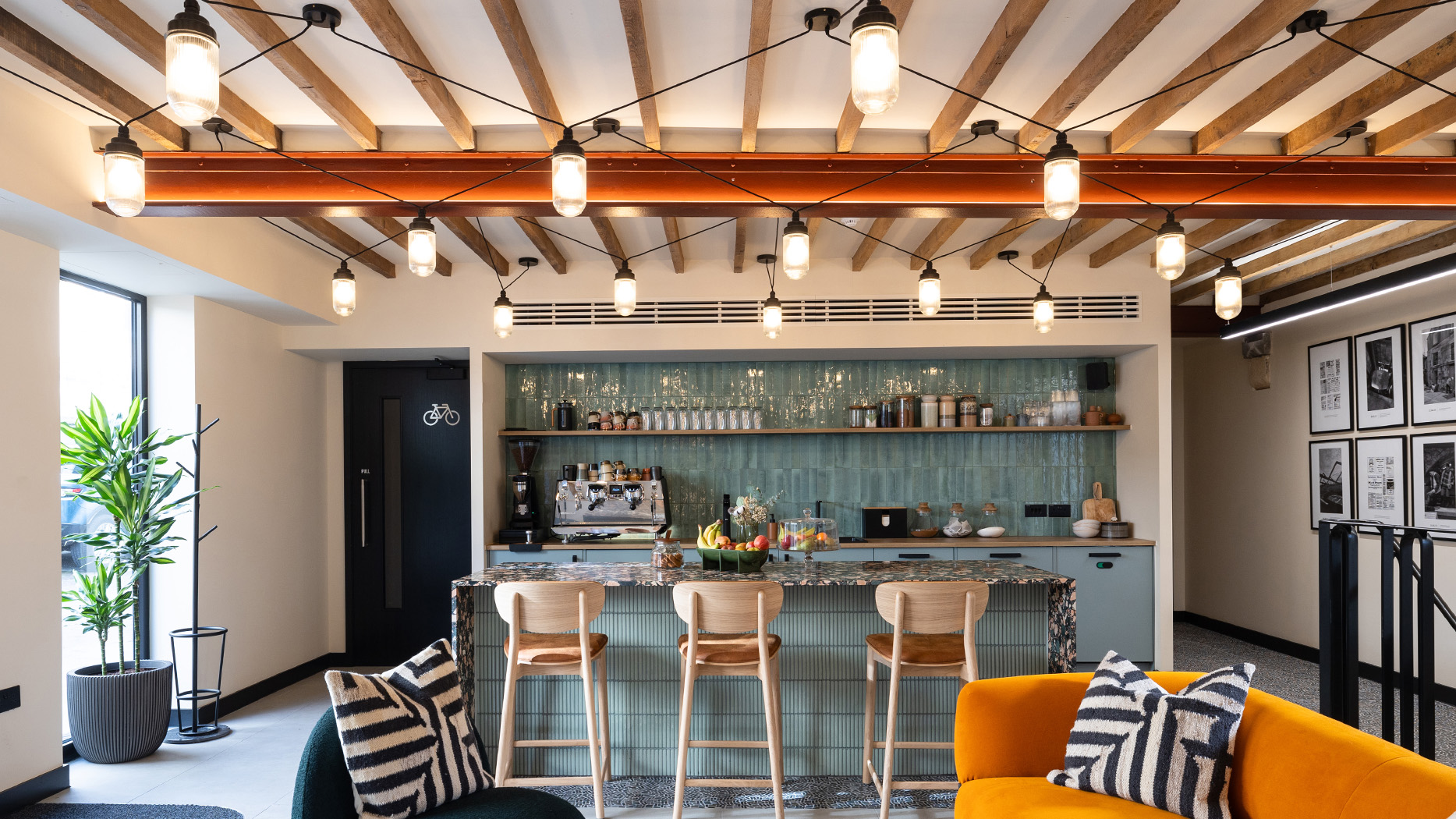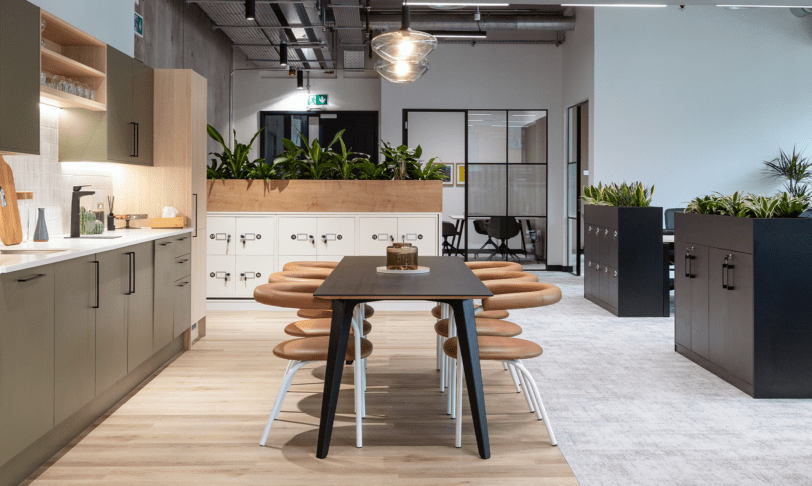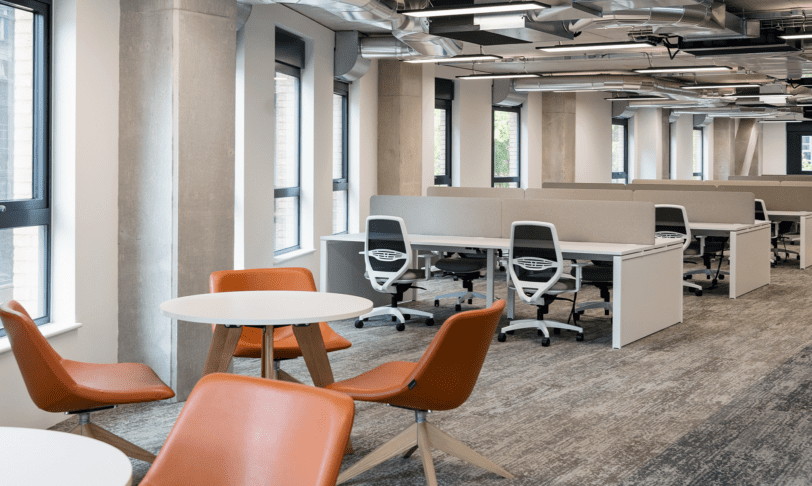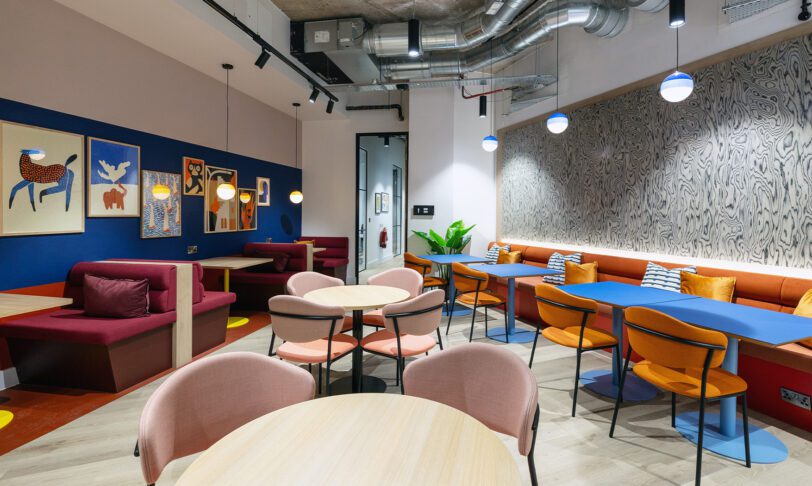Design inspiration: office lighting ideas
Lighting plays a vital role in shaping an enlivening workplace environment. It’s not just about comfort – it’s about creating a space where people feel energised and able to do their best. Let’s explore how the right lighting can transform any workspace into a vibrant, effective environment.
Why is lighting such an important part of office design?
According to research from Cass Business School, good lighting can really boost workplace performance, helping people get things done faster with fewer errors. On the other side of the coin, bad lighting is a major office design mistake that often gets overlooked. If your space is so dark an Ouija board wouldn’t feel out of place, it’s hardly going to be conducive to productivity. Conversely, overly bright lighting can lead to eye strain, headaches, and fatigue.
Lighting has also a big impact on the overall mood of an office. The proper setup will maximise the space and make it feel much more inviting – setting the right tone for collaboration and focus while also helping people feel at ease.
What is the best lighting for an office?
How bright should office lighting be?
Office lighting should be bright enough to handle tasks comfortably without any annoying glare or harsh reflections. A good rule of thumb is about 500 lumens per square metre, but this might shift depending on your office layout and what activities are taking place.
Is LED office lighting or fluorescent better for offices?
LEDs come out on top for several reasons. They last longer, use less energy, and give you more control over light intensity and colour. Unlike fluorescent lights, LEDs don’t contain mercury, so they’re better for the environment. Plus they light up instantly – whereas many people find the flicker of fluorescent lighting vexatious to say the very least.
What is the best colour temperature for office lighting?
For a cool, daylight-like feel that keeps people alert and focused, go for 4000 to 5000 Kelvin. It’s pretty close to natural light, which is the ideal lighting benchmark for productivity and wellbeing (more on this shortly):
What is the best office lighting for reducing eye strain?
If reducing eye strain is your priority, opt for task lights and adjustable desk lamps. This lets people adjust their personal set-up (which works wonders for wellbeing) and aim the light exactly where needed to offer the right contrast and detail.
Using office lighting to reduce headaches and migraines
Flicker-free lighting that cuts glare is essential for keeping headaches and migraines at bay. Natural light is ideal, but if that’s not an option, LED lights that mimic it can do the trick. Make sure people can adjust their lighting to their own preferences, as everyone’s sensitivity is different. Features like dimmers and blinds help control the intensity so people can stay comfortable.
Interaction’s Ultimate Guide to Office Fit-outs [PDF Download]
A comprehensive step-by-step guide to office fit-outs. Advice on decision making, budgets and finding a location. Download here.
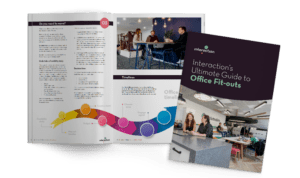
How to stimulate natural light in the office
The benefits of natural lighting in office design are varied and abundant: from improved Vitamin D intake and enhanced focus to better sleep patterns and circadian rhythms.
If, for some reason, natural light is lacking, try to replicate it with indirect lighting and daylight-simulating LEDs to create soft, diffused light. Adding mirrors to bounce light around and opting for a lighter colour palette can also give the illusion of a well-lit room, even if it’s a tad tucked away.
Regulations and requirements for office lighting
Making sure your office lighting meets safety standards is paramount—not just because it’s required by law, but also because it keeps your team healthy and safe. Here’s a quick rundown of key guidelines from the Health and Safety Executive (HSE) to help you get it right:
Avoidance of glare and shadows: Glare is the bugbear of many an office worker – messing with visibility and straining the eyes. As well as ensuring lights are bright enough for people to see and work comfortably, check that all lights are placed properly to minimise glare and shadows (so there’s no more unsightly squinting).
Emergency lighting and maintenance: Emergency lights that kick in automatically when the power goes out should be regularly tested to ensure their reliability. In a similar vein, lighting systems should be inspected periodically to reduce the chance of electrical hazards.
Adjustability and control: Adjustability is part and parcel of any productive workspace. Personal control makes a big difference, whether it’s dimming a light, adjusting brightness or switching off any superfluous fixtures.
Adjustable lighting is also a key facet of designing for neurodiversity. For instance, soft and diffused lighting can cultivate a calmer, more neutral environment for people who may experience sensory overload. Giving people control over lighting allows them to tailor environments to how they feel most at ease and comfortable – a fantastic example of how designing for inclusivity often means better design for everyone.
Special consideration for display screen equipment (DSE) users: If your team is glued to their screens, make sure their lighting is set up to avoid glare and reflections. This means positioning screens properly and using background lighting that won’t reflect off their monitors.
Chat with Charlie
Get in touch with Charlie, our Relationships Manager to discuss how we could revolutionise your space.
Email: [email protected]
All general enquiries
Phone: 01225 485 600
Email: [email protected]
Or sign up for our newsletter here

Bright ideas for office lighting
Modern office lighting
Modern office lighting blends style with efficiency, featuring sleek, minimalistic designs and incorporating smart lighting technology. LED panels, track lighting, and recessed lights are popular choices, providing even lighting that can be adjusted to match the natural light cycle:
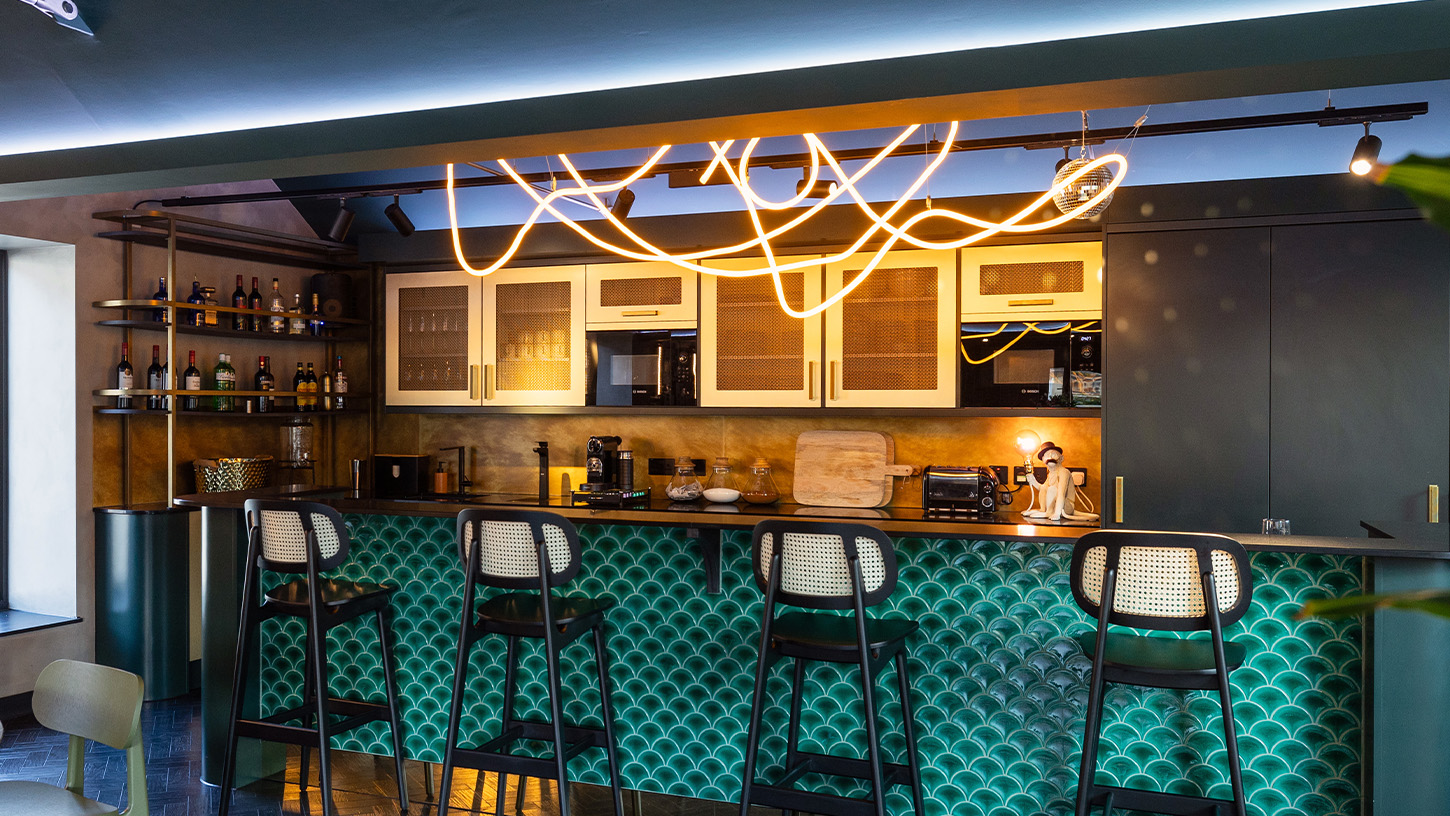
Industrial office lighting
Industrial office lighting has a rugged, unfinished look, often featuring metal fixtures and exposed bulbs. This style suits spaces that favour an open-plan layout with raw architectural elements. Pendant lights, wall sconces, and industrial floor lamps light up the office and double as eye-catching centrepieces that bring character and edge to the whole space.
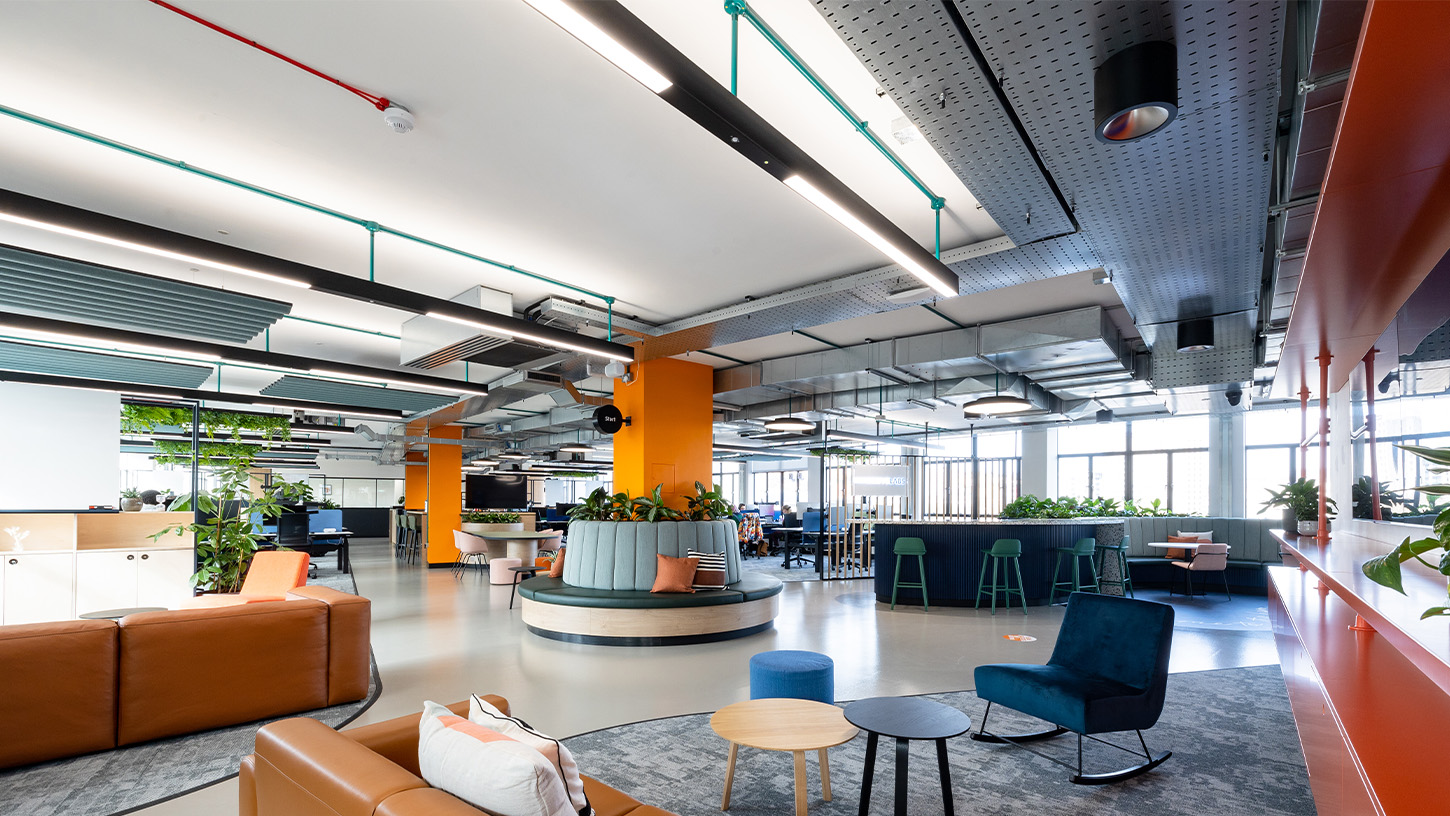
Ceiling lights
Ceiling lights are the go-to for general lighting in any office. Whether you prefer flush mounts or something a little fancier depends on your style and ceiling height. Sleek LED panels give modern offices a streamlined, polished look, while decorative fixtures bring a classic vibe to traditional spaces.
Wayfinding lighting
Wayfinding lights serve a dual purpose: enhancing navigation and contributing to the overall aesthetic. Strategically placed, these lights guide employees and visitors through the workspace, as well as helping to zone a workspace. Ideal for corridors, stairwells, and open-plan areas, wayfinding lighting can also be integrated with other lighting elements to create a cohesive and visually appealing environment. Beyond functionality, well-designed wayfinding lighting adds a modern touch to the office, promoting a sense of order and professionalism.
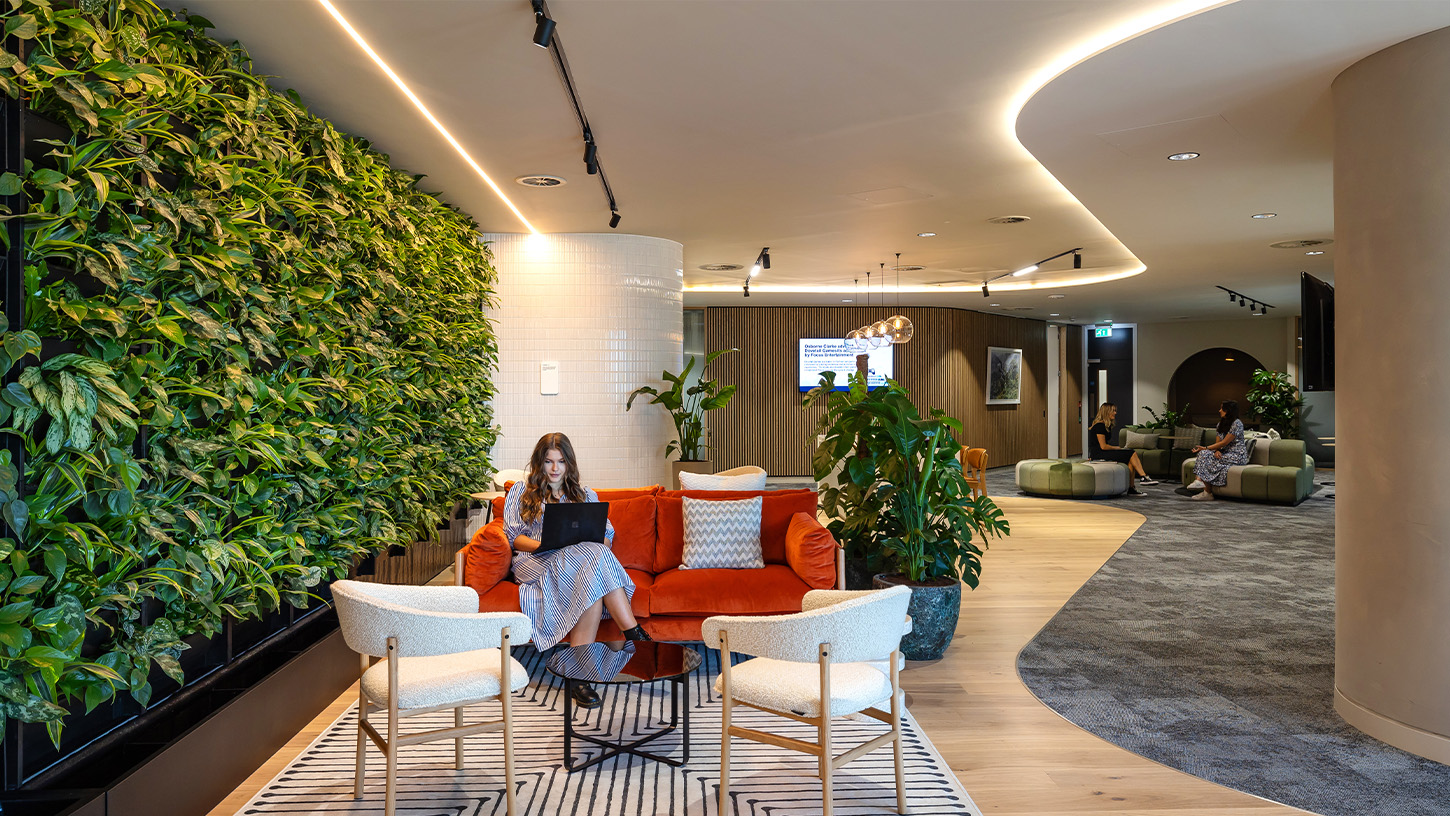
Desk lights
Desk lamps are essential for task lighting. Adjustable ones let you direct the light exactly where you need it, which eases eye strain. Lamps with dimmable settings and colour controls give employees the power to create their ideal lighting setup, making their workday a bit smoother.
Wall lights
Wall lights can add layers to an office’s lighting design, providing ambient or task lighting while saving desk space. These are particularly useful in smaller offices or areas where floor and desk space is at a premium. Wall-mounted lamps or sconces can complement overhead lighting and add warmth to a room, making the space feel more inviting.
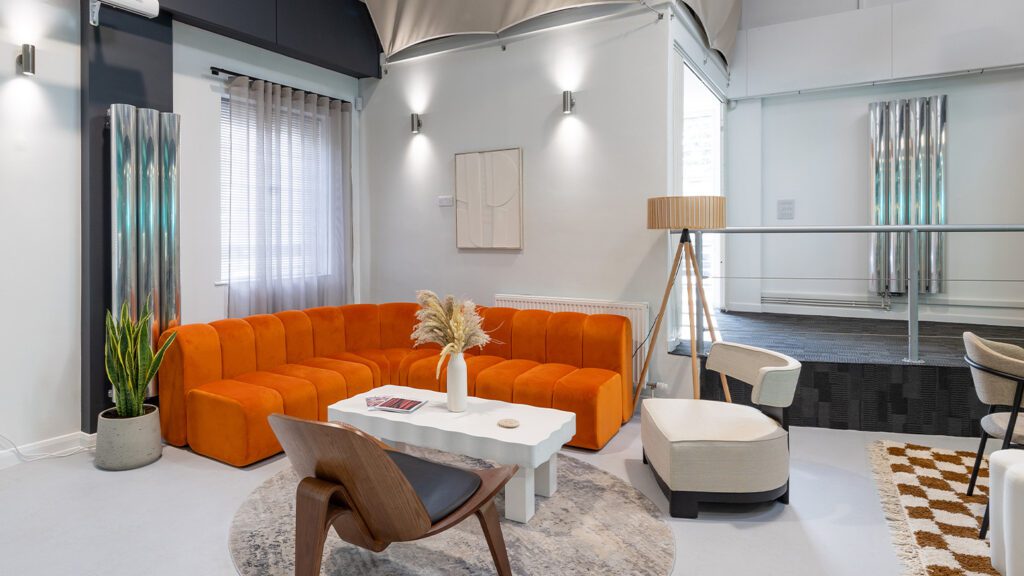
Sustainable office lighting
Sustainable solutions are becoming more crucial to modern workplace design, resulting in some exciting and innovative designs. For example, in our work with Osborne Clarke we used lamps made from orange peel, squeezing out the essence of around 20 oranges for each one.
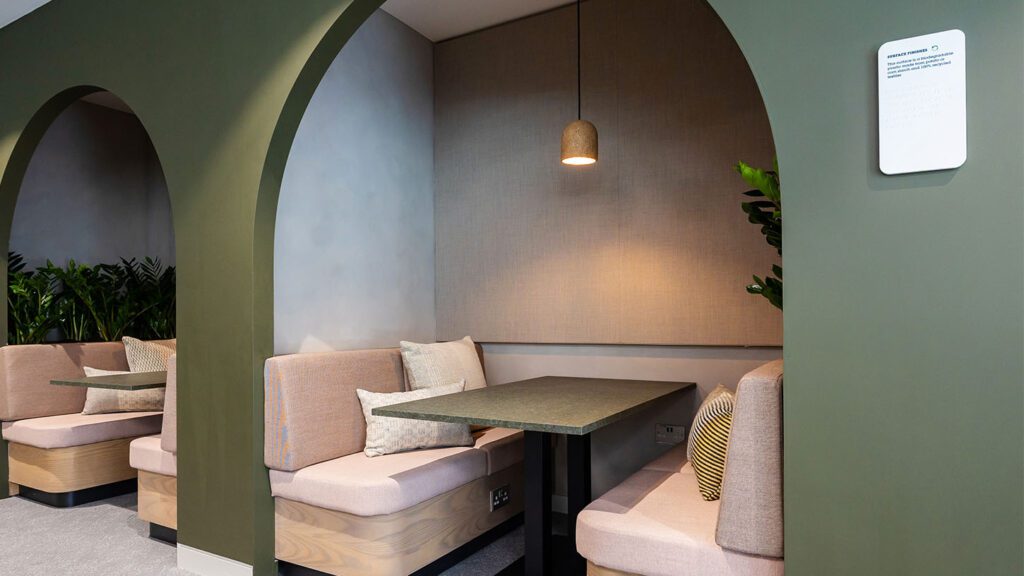
Interaction specialises in modern, insights-driven and existing office designs and fit-outs. To find out more about who we are and what we do, why not book a chat with Charlie, our relationships manager, or call us on 01225 485 600 to speak to a member of our team?
